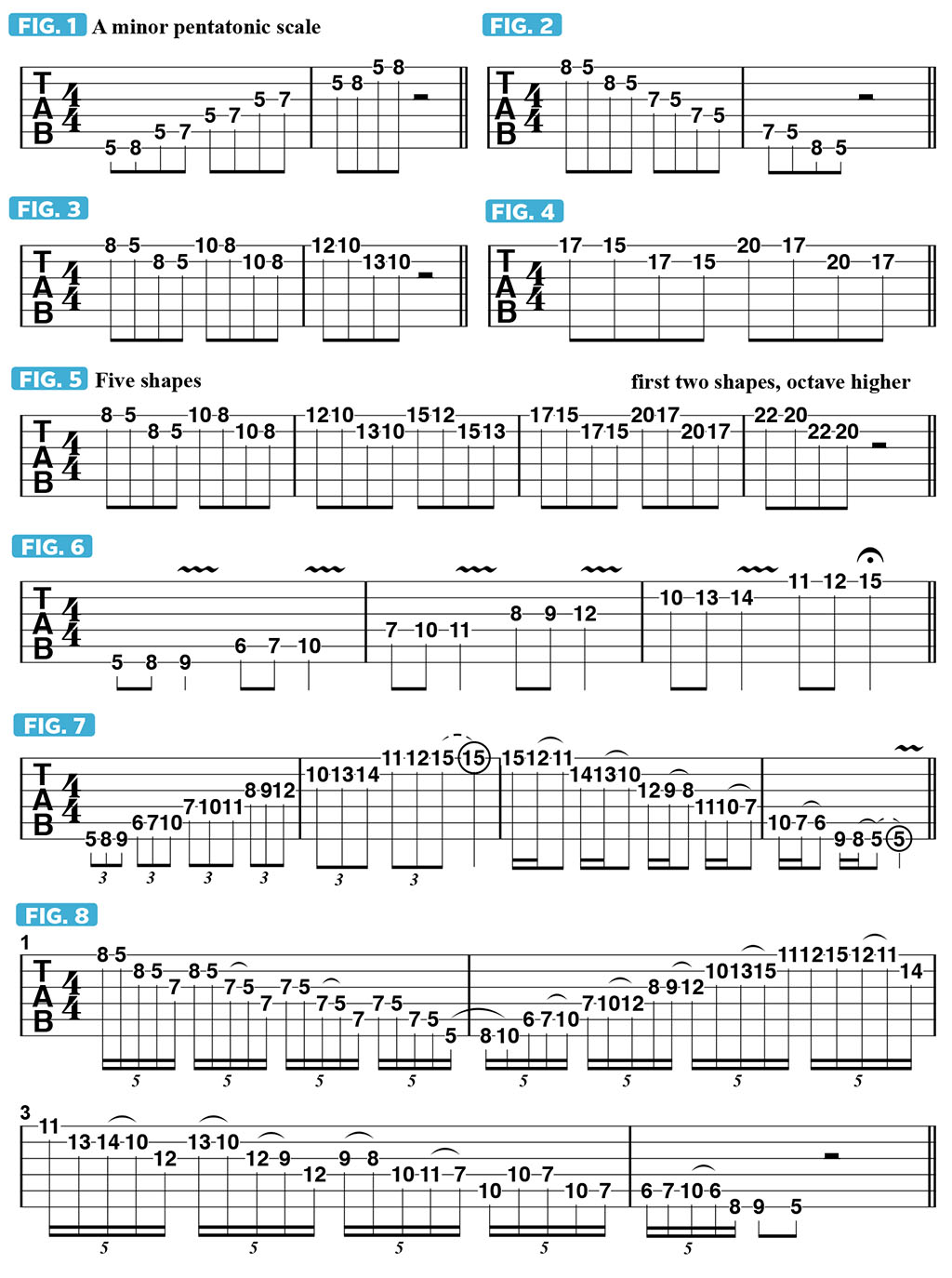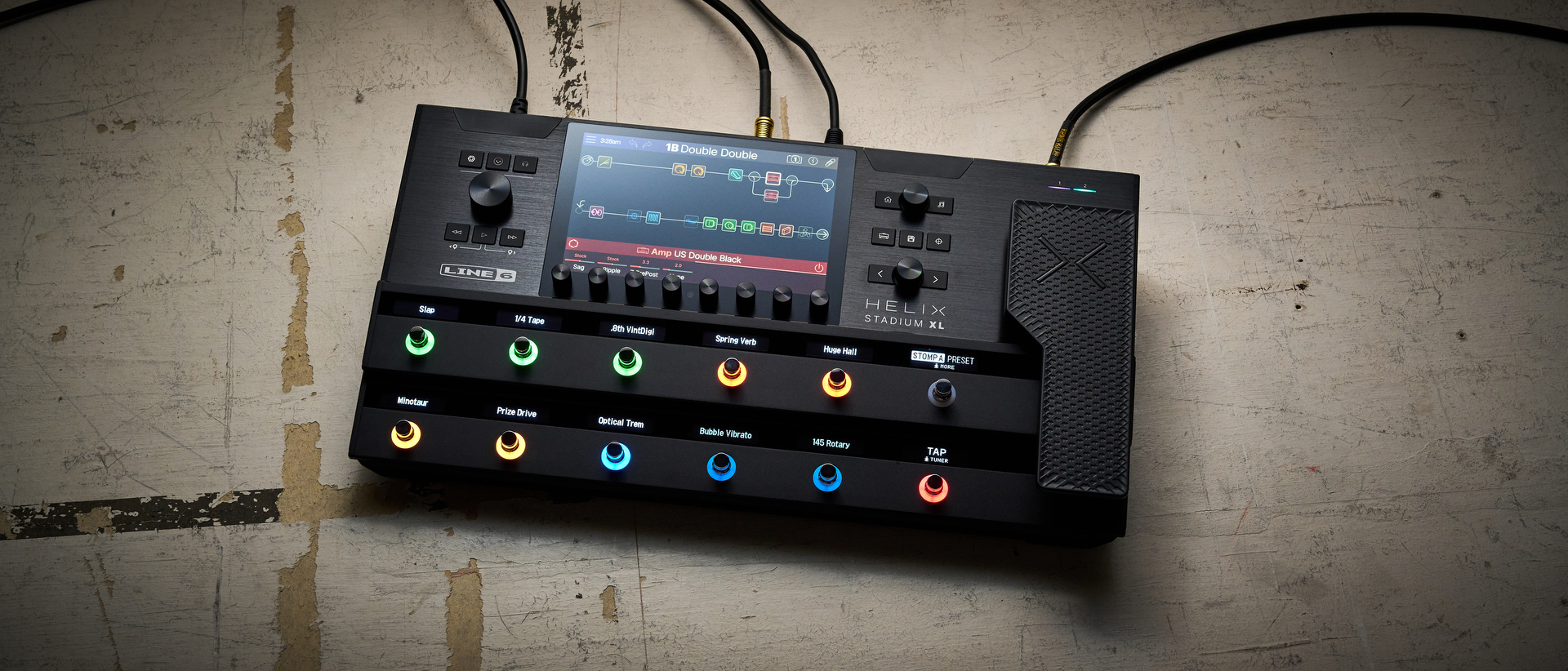Breaking down the pentatonic scale into two-string shapes will redefine the way you play
Expand your mind and visualize the fretboard in a whole new way with this in-depth Dweezil Zappa lesson
Hi, I’m Dweezil Zappa, and welcome to my new column for Guitar World. Over the course of these lessons, it is my hope to help you expand your knowledge of the guitar while also offering some distinct and different approaches to playing the instrument.
In this first column, I’d like to show you a few things that are intended to help you visualize the fretboard as three sets of two adjacent strings and demonstrate why this is useful and beneficial. For example, most of you are probably well familiar with the A minor pentatonic scale played in fifth position, as shown in FIGURE 1.
Within this pattern, there are three specific shapes that represent three of the five, based on minor pentatonic, that can be played on adjacent strings. Using this fifth-position pattern, I can visualize these different shapes of minor pentatonic that fall on each set of adjacent strings.
As illustrated in FIGURE 2, the first shape resides on the B and high E strings, the next shape falls on the G and D, and another shape falls on the bottom two strings.
Now if I were to transfer those three shapes to one pair of adjacent strings, the result is the sequence demonstrated in FIGURE 3. The final two shapes are performed in FIGURE 4, higher up on the fretboard, and the last of these shapes represents the octave up from where we started, as the notes C A G E are now played in 17th position, as opposed to fifth position.
FIGURE 5 illustrates all five distinct shapes in sequence. After these first five, the shapes then repeat an octave higher, up in 17th and 20th positions.
The concept of visualizing three sets of two adjacent strings like this offers you the ability to recognize these patterns on each set as you traverse the neck, which can be a very useful aid in fretboard navigation when soloing. This idea is especially useful if you’d like to start changing some of the notes in each of these shapes.
All the latest guitar news, interviews, lessons, reviews, deals and more, direct to your inbox!
For example, a great way to make the pentatonic scale sound more interesting is to add one chromatic note on each string. As demonstrated in FIGURE 6, I can continually move up the fretboard by alternating between root-minor third/major third and flatted fifth/fifth-flatted seventh on consecutive pairs of adjacent strings. In FIGURE 7, I ascend the sequence in eighth-note triplets and descend in 16th and eighth-note patterns.
In FIGURE 8, I play through these shapes in an unbroken string of quintuplets (five-note groups), which yields some pretty interesting results and makes the ordinary minor pentatonic scale suddenly sound like something a bit different.
Now that you have the idea, try coming up with your own deviations on this concept in your quest for new and different melodic patterns.
Dweezil Zappa is a brilliant guitarist and son of the legendary Frank Zappa. For the last 12 years he has toured the world performing his father’s music with Zappa Plays Zappa and other ensembles. His latest album is Confessions of a Deprived Youth (Deep Fried Youth).

